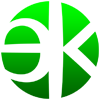
Earth’s Many Space Programs – Learn Stuff
In a time when private companies like SpaceX or Blue Origin can leave earth whenever they want, it’s easy to forget that the U.S. is not the only country with space operations. In fact, there are over 70 different space programs worldwide, though only three have the capability of human spaceflight. Beyond NASA, let’s see who is going where no one has gone before.
Human space exploration started with the Soviet Union’s Sputnik 1 satellite back in 1957. The U.S. got Explorer 1 to space just a few months later in 1958. By 1961, the Russians won again with the first human to leave earth: Yuri Gagarin. The race was tight, as American Alan Shepard got to orbit less than a month later.
The United States went to the moon and back for the first time in 1969, and has dominated space exploration ever since. Today only Russia, China, and the U.S. are capable of sending humans off the planet.
Although there are those 70+ official space programs, only a handful have the ability to do anything on their own. 57 have satellites in operation, but just sixteen can actually launch rockets into space, and only six of those can perform recovery as well.
Who can launch stuff into space?
The number sixteen may be a bit generous. Australia, Iran, Israel, North Korea and South Korea could, but aren’t multi-launch capable. Iran and North Korea probably just say that they can. While Brazil, Italy, France, and Ukraine can get rockets to go that far, they can’t get them back.
The six agencies that can launch and recover, and also send things to places like other planets are from China, Russia, U.S., Japan, India and Europe.
China and Japan got their first satellites into orbit back in 1970. India and the European Space Agency came next in 1975, but India exclusively used Russian technology at the time.
Although one of the ‘big three’ today, China is relatively late to the game. The first person put into space by China was Yang Liwei in 2003. Russia and the U.S. have had space stations in orbit since the 70’s, but China’s first permanent space station is still under construction today.

It’s probably not a surprise that NASA spends twice as much annually as China does, and almost ten times more than Russia. That’s not including the United States Space Force, or the private companies owned by Elon Musk or Jeff Bezos. Somehow Pakistan spends $45,000,000 per year on their space program, but I don’t see Pakistani space shuttles in orbit anytime soon.



















